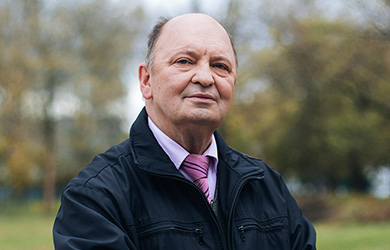
Diabetes day by day
Good diabetes management requires awareness and careful planning for all types of environments and situations.
Type 1 diabetes is a chronic disease that occurs when your body cannot make insulin or makes very little insulin. 1
Type 1 diabetes can be managed by following your healthcare professional's advice.
In most cases, type 1 diabetes develops early in life and is often diagnosed during childhood. 3
Signs of type 1 diabetes include: 1,2
If you or a loved one experience any of these symptoms, please seek medical support immediately.
The disease starts when the immune system attacks cells in the pancreas that produce insulin, the hormone that helps convert glucose into energy for the body’s cells. As more insulin-producing cells in the pancreas are destroyed, the body can no longer control its blood sugar levels and the symptoms of type 1 diabetes begin to appear.1
Genetic and environmental factors are suspected to play a role in why a person develops type 1 diabetes.1
If you show signs of having type 1 diabetes, your doctor may use blood or urine tests to diagnose it. There are several ways this can be done. An initial test can be a simple blood sugar test. If your test results are above normal and you have the common symptoms, you may be diagnosed with type 1 diabetes.1,2
If you do not have the common symptoms, but your blood sugar or urine blood sugar level is high, additional blood tests can be taken to measure HbA1C levels.1 HbA1C is a measure of how well controlled your blood sugar has been over three months, and it gives a good idea of how high or low, on average, your blood sugar levels have been. This chart compares normal levels with those indicating type 1 or type 2 diabetes.4
Since type 1 diabetes can develop quickly without any clear warning signs, getting a diagnosis may come as quite a shock. 3
The best thing that you can do is take control of the situation and learn as much as possible about type 1 diabetes, the treatment options and how it can affect daily life. Talk to your doctor for more information and advice. There are also many resources available for and by diabetes communities worldwide. The more you know, the more prepared you will be to deal with the challenges ahead.
With good management of blood sugar levels and an overall healthy lifestyle, most people with type 1 diabetes can live a long and active life.

